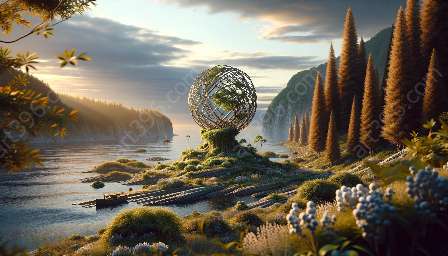Land art and landscape architecture share a deep-seated connection that influences the way we interact with and perceive the natural environment. Both creative practices focus on the manipulation and enhancement of the landscape, but they do so in distinct ways.
Understanding Land Art
Land art, which is a subset of environmental art, encompasses works that are created directly within or using the natural landscape as a canvas. It often involves massive earthworks and large-scale installations that interact with the environment in innovative ways.
Landscape Architecture in Environmental Art
Landscape architecture, on the other hand, integrates art, science, and technology to create sustainable and aesthetically pleasing environments. It focuses on the design and planning of outdoor spaces, including parks, gardens, and urban landscapes. Landscape architects strive to improve the functionality and beauty of the land while also considering the environmental impact.
The Overlapping Elements
Despite their different approaches, there are several overlapping elements between land art and landscape architecture:
- Harmony with Nature: Both land art and landscape architecture emphasize the importance of working in harmony with nature. They seek to enhance the natural beauty of the environment rather than imposing artificial elements.
- Human Interaction: Both practices consider the relationship between human beings and the environment, aiming to create spaces that encourage positive interactions and experiences.
- Environmental Awareness: Land art and landscape architecture often raise awareness about environmental issues, such as sustainability, conservation, and land use.
- Transformative Effects: Both disciplines have the power to transform how people perceive and engage with the environment, whether through thought-provoking land art installations or well-designed and functional landscapes.
The Impact and Significance
The connections between land art and landscape architecture have significant implications for environmental art. Together, they offer creative solutions for addressing environmental challenges, enhancing public spaces, and fostering a deeper appreciation for nature.
By studying these connections, we gain insight into the potent role that art and design play in shaping our relationship with the environment, inspiring us to consider the profound impact we have on the landscapes we inhabit.

